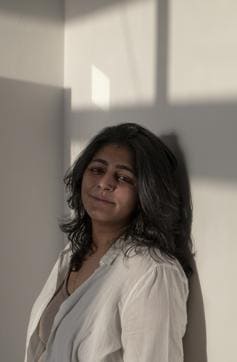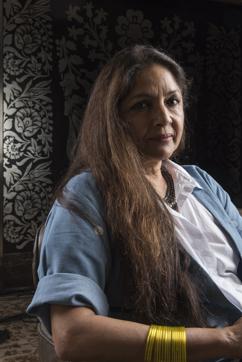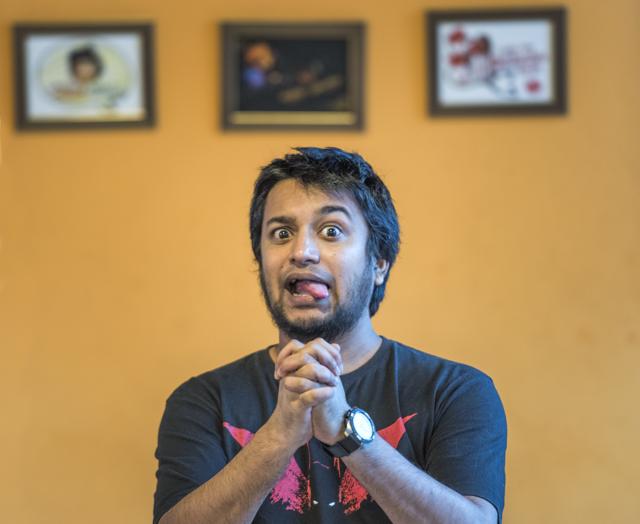Riding a new wave
New beginnings, new adventures, new experiences, new partnerships....Here’s a bunch of plucky men and women who weren’t shy of riding out the stormor navigating uncharted waters
Does life keep to a script? The short answer is no. In the 14th century, Christopher Columbus, an Italian explorer, sets his compass for India. He lands in the Americas. A century later, a ship helmed by another man, shows the world another way, other than the Silk Road, to enter India; Vasco da Gama docks his vessel in Calicut.

In the late nineteenth century, Raja Ravi Varma, an artist in the kingdom of Travancore, enters court to do portraits of his patron, the king. Also patronised by the British, he picks up the Western style of composition using perspective and realism, and re-emerges as the painter of mythical and epic figures.
Ardeshir Vakil, Bombay cinematographer of the silent era of the Hindi film industry, puts his faith in sound and directs Alam Ara (1931), India’s first talkie. In the ‘50s, French critics gathered around a journal, the Cahiers du Cinema, call out the French canon and start making their own films, ushering in the New Wave . At around the same time, a junior visualiser with a British advertising firm, Satyajit Ray, ditches advertising and starts looking into a film camera....
In short: people all over the world push their toes into all sorts of shoes so as to run in new directions. In life, there are no false starts, only new beginnings. Every jolt, break, or change, is the opportunity to try something fresh as there is always a world beyond the one we know. We profile five people who start over and greet their new life with spirit, resolve and a sense of adventure.
Noor Enayat
A partner with a PR and marketing firm in Delhi, she thought she was bisexual till her relationship with a person of the same gender changed her life

I’ve been lucky to belong to an open-minded family where heterosexual relationships may have been the norm and the ‘normal’ way to be, but I was aware of homosexual relationships being lived. One was aware of family friends who had an alternative sexuality, but that fact was considered irrelevant.
Till I entered college, I dated boys. We pecked each other’s cheeks, held hands, and may be exchanged a kiss or two. Must say I found it the most boring thing under the sun. All the men I dated I was attracted to them as individuals, but sexually, I felt nothing.
In college, I became friends with a classmate. It was a deep friendship, and one day, the underlying attraction played itself out. It was not the first time we had been alone, but there was that moment, a time and a sense of comfort, and we went ahead with what we were feeling. It just felt right emotionally and physically. With my experience with her, I began to realise things about myself. That I had, and continued to notice women more than men, that I didn’t remember the boys from school, yet I remembered all the girls, and that I had grown accustomed to the norms of a certain world, which was open – in that it had not suppressed the expression of the desire of one woman for another, but it had not acknowledged that either. And it had seemed all right to me, until then. There was relief, and also the thrill of feeling alive for the first time.
We were together for two years. I saw no reason to lie anymore about who I was. I have had relationships exclusively with women since then. But for the first few years, I thought if not straight, I’m certainly bisexual, because I was still trying to fit in and be socially acceptable. In 2005, a male friend, one day, told me that ‘Do you realise you are in fact gay. Please just come to terms with it....’ Over the years, I’ve introduced my partners to my family, and while it took them a while to understand, they are okay with it now.
What I do in my bedroom is my business. I’m queer, but I say that with a sense of freedom by being able to reclaim the original meaning of the word – someone at odds with what is considered normal. If queer is a slur for everyone who is not straight, I embrace it. I also embrace it because I don’t conform to a certain expected queer dynamic – that I should dislike or hate the straight world and only hang out with queer people. Some of my closest friends are straight men and women, as are, of course, queer people. I’m as assimilated in both worlds. My sexuality does not define who I am, it’s merely a part of me.
Vedant Bharadwaj
After dastango Ankit Chadha’s death, musician Vedant Bharadwaj, based in Chennai, had to rethink his act by forming collaborations with other artistes

I first met Ankit Chadha when we were both performing at the Kabir Festival in Mumbai. We were introduced by its organiser Falguni Desai, a lawyer. Ankit was by then quite well-known in dastangoi circles. He was at the time, planning a dastan on Amir Khusrau, the great Persian poet whose contribution to the qaawali and ghazals was immense.
Ankit felt his dastan would be incomplete without music, even though dastangoi, which is dramatised storytelling, does not traditionally include music. So I came into the picture and our collaboration began. Because I am a musician and I would be playing an instrument, further changes were made to the dastangoi ‘structure’; instead of the ‘showy’ Lucknowi kurta-pyjamas we wore ordinary ones, for instance, so that I would have ease while holding the banjo. We travelled together for work and our friendship grew. There were running duels on who could crack the worst PJs.
Praarthanaa, which explored the idea of death in the Collected Works of Mahatma Gandhi, was Ankit’s last dastan. In Khusrau, besides Ankit and me there were other collaborators, but for Praarthanaa, Ankit thought it would be better to keep this small, just we two. Both of us chose songs that Gandhi would sing at his evening prayer. Last April, we had recorded the Praarthanaa show – his narration, my songs. Ankit died in an accident a month later.
In July when I did Praarthanaa at the Sabarmati ashram to commemorate its 100 years – it was both our dream -- I played Ankit’s rcorded voice on stage. I found it very difficult to keep my emotions under control because just soon after Ankit speaks out, as it were, I have to begin my song. Himanshu Bajpayi, a long-time collaborator of Ankit’s, now does Ankit’s part as well when he does Khusrau. This year, I did Praarthanaa with Falguni, who had never performed on stage. So all of us had to begin afresh and we did that by keeping Ankit in the middle.
When she did Praarthanaa, I didn’t expect her to sound like Ankit but she felt inspired enough to do this. The important thing is when we perform this work, Ankit lives. When we are on stage and do a performance in which Ankit was such an important part, we don’t just hear his voice, we also imagine him being there.
Tejshree Savara
A lawyer, law stopped being her prime focus, when she opened her NGO and company for dog products in Delhi

I come from a family of lawyers and I practised law over a decade. I started off in oil and gas, which wasn’t my cup of tea, and then moved to art and antiquities law. I’ve always had dogs around me. One day I went out to feed a pack of strays that stayed in front of my house when someone chucked a stone at them. And the thought crossed my mind – they should scream and say ‘we exist’.
Eventually when I started my NGO, that’s what I named it, The We Exist Foundation, a year ago. I do consultancy off and on but law has stopped being my prime focus. My dogs are the centre of my life now. I structured the two companies -- The NGO and the for-profit company through which we sell dog products – such that one would feed the other. The fund raising I do is to look after my strays and indies. I didn’t do this because I just find them cute or cuddly.
There were times when people said, ‘You have studied so much and spent so much on your studies and now to give it all up to do something so niche....” It’s just that I felt that commitment so none of that matters anymore. And I don’t feel like I ‘gave up’ anything. When someone adopts a dog of mine and I see it going into a home, or I’m able to convert someone to look at a dog with kindness that seems worth more to me than any cheque I would get end of the month.
But being an entrepreneur isn’t easy. I had to re-wire myself, teach myself how to run a business from scratch. There were days when I felt I wanted to shut it down. And then one little pup would walk up to me or jump into my arms and I would think they are not going to stop loving me no matter what, how can I stop doing this for them?
Neena Gupta
The veteran actress discusses her new innings and how she went through a period, before Badhaai Ho, when she had no work

For a long time after my wedding in 2008, people who saw me in Mumbai were surprised. There was an impression that I had moved to Delhi, because that’s where my husband’s family was based. It wasn’t true. I wasn’t working because I wasn’t getting any meaningful roles.
I did not like the television roles I got as they were unrealistic, and I hardly got any film offers. I was not yet 50. This period was really hard for me; after working continuously for over 20 years, I had nothing. I busied myself helping my daughter [Masaba Gupta] with her fashion design business and kept engaged in other interests like dance and music.
But my primary profession is acting and without it there was an emptiness that was really hard to deal with. I would go on vacation, but there was this restlessness even then. Holidays never feel as good when you’re not actually taking a break from work.
I did whatever little interesting work came my way, and then I did the short film Khujli [in the web short, which was released in 2017 and quickly went viral, Gupta and Jackie Shroff play a middle-aged couple beginning to experiment in the bedroom].
People seemed surprised that I was working ‘again’. I wanted to change that impression. So in July 2017, I put up a post on Instagram chiefly to clarify [the post stated simply ‘I live in Mumbai and working am a good actor looking fr good parts to play’.] At the time, I was new to Instagram and only had about 11,000 followers. But Masaba shared the post and then people began to really take note of it, or maybe it was good luck, but I started getting offers again.
The first person who approached me after the post was director Anubhav Sinha with the film Mulk (2018). Then came Badhaai Ho (2018). Ayushmann Khurrana said I was too hot to play his mother but I asserted that I am an actor and I can pull off any look. The role in Khujli helped in that.
I was doing my first big role in a mainstream film in 10 years, but once in the studio, it felt like I’d never been away. They say if you learn to swim once you never forget, the same can be said about acting. The world of Indian cinema, though, is different now. There is so much opportunity to play interesting characters, to play realistic women too. My next film is Panga, where I play the mother of a woman kabaddi player. It feels great to be back to work and the recognition after Badhai Ho was very encouraging. But sometimes I wish I was younger now, when things have changed so much, with good stories being told.
Jose Covaco
Radio personality-turned MTV VJ-turned Vine video maker-turned YouTuber-turned video-based social media comic based in Mumbai

Honestly, I’ve been around for so long and done so many things, I’ve blocked out parts of my life. I know the world sees me as someone who’s done so many things, but look back. I was in radio for a whole 10 years, starting out as a trainee. I was pretty content – you never have to dress up for a radio job. I’d have stayed there happily had there not been an opportunity in TV.
I was at MTV for a whole five years before it hit me that I couldn’t hack it any more. Who knows when the world’s going to end, right? I was already making videos on my phone, the world was moving on to social media. So I chucked my contract, the job, the salary and moved to comedy videos.
I’ve been lucky. I’ve been less busy and more productive in this phase of my life. I don’t even have to leave my home for some of the videos. TV has too many cooks. An idea is CCed to 15 people on email, who book the conference room for a meeting, and then spend ₹1 crore on a video that 400 people will ultimately watch. It doesn’t really let you be yourself.
Here, I’m the ideator, creator and executor – and everything is quick. Radio teaches you to create content from nothing, no budget, no cast, just an idea. And to keep it as simple as possible, like misheard lyrics, or the video gag that the new ₹2,000 notes were so advanced , they were embedded with microchips.
We did one very popular video about Bandra stereotypes, in five or six minutes, but that’s because we’d been preparing for it our whole lives. I know the work is hard to classify. It’s not stand-up, it’s not satire, I’m not doing impressions. But I’ve never worried about that. I just wonder if it’s funny and if I can pull it off.
Like everyone, I was less scared as a younger person. From radio to TV, I asked myself, “Will I enjoy this?” From TV to social media, I said, “Will I be able to do this?”
If my video is sponsored, I work extra hard because people expect to be entertained for free. But most of my work gets produced, and is enjoyed, for its casual silliness precisely because I have the time for it. I now have a sort of manager, my friend Cyril Dabreo. He’s the reason I can sleep until 2 pm, have people say, “Dude you haven’t returned my calls”, and still do brand partnerships, review gadgets and keep making stupid videos.
(Interviews by Paramita Ghosh, Dipanjan Sinha and Rachel Lopez)






